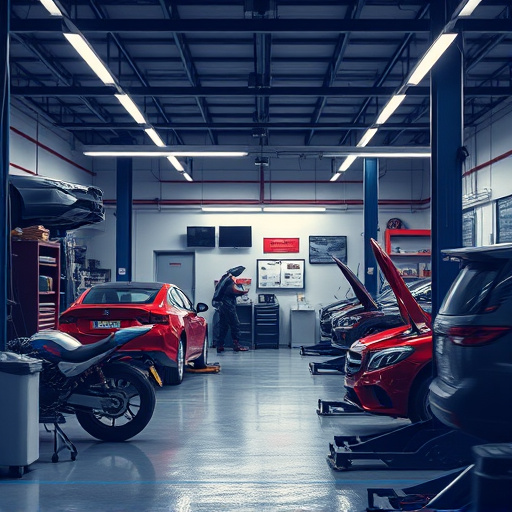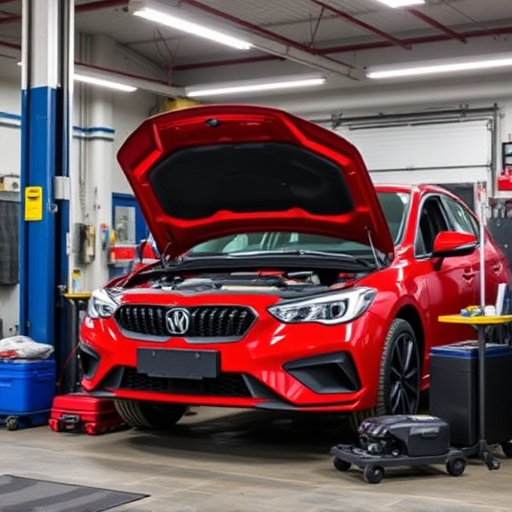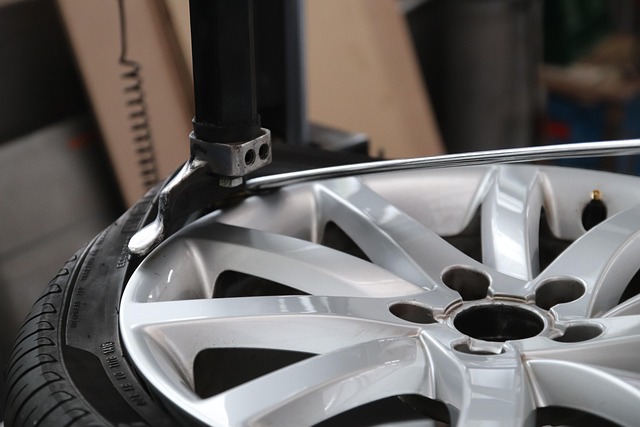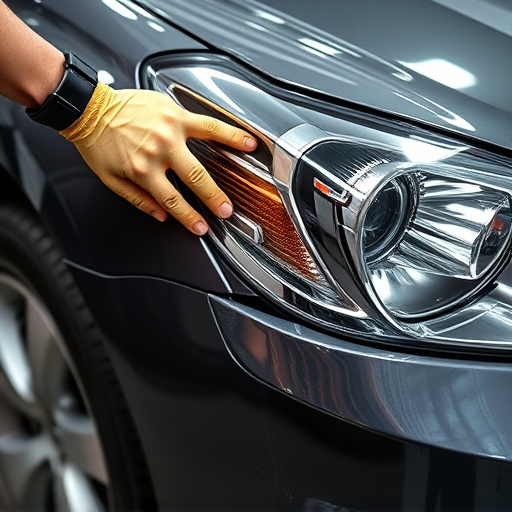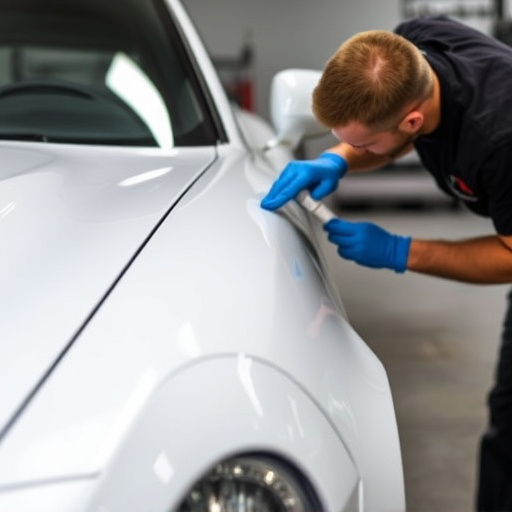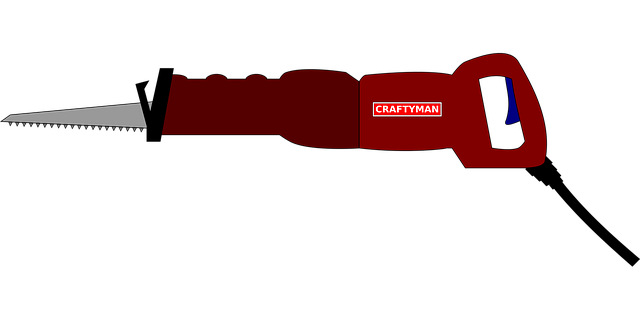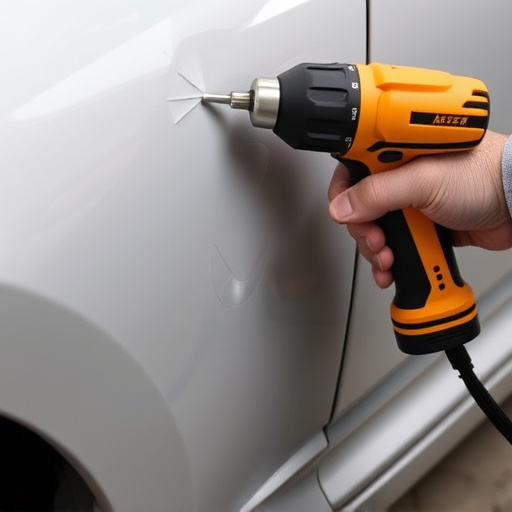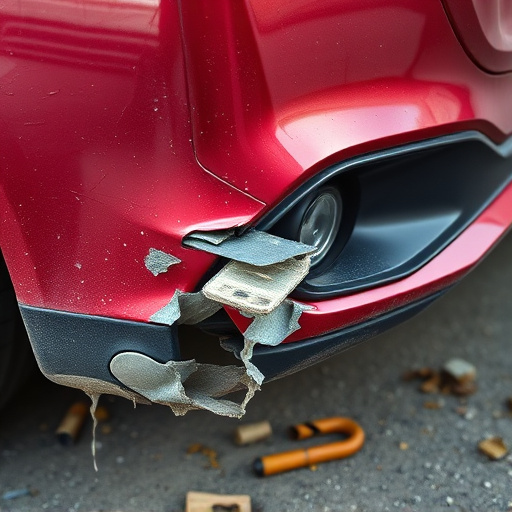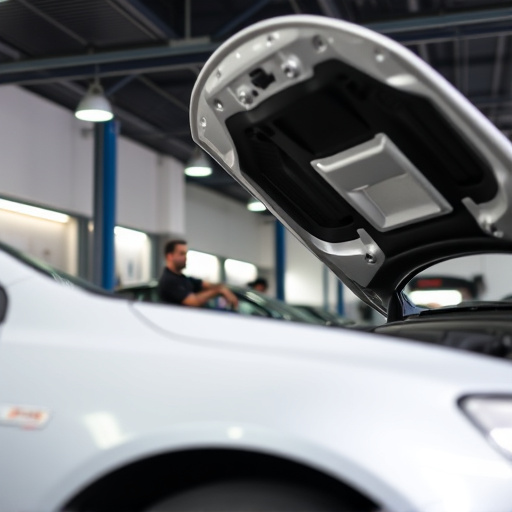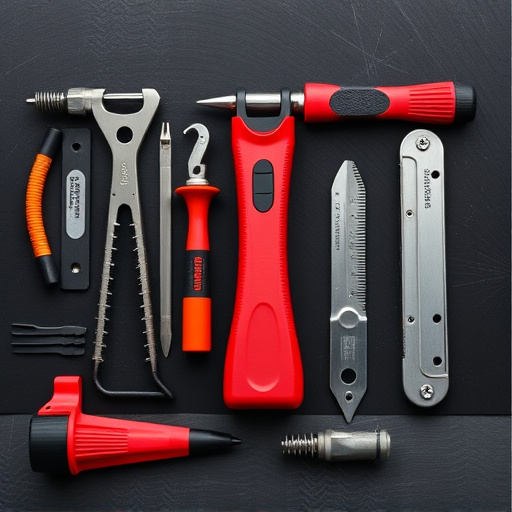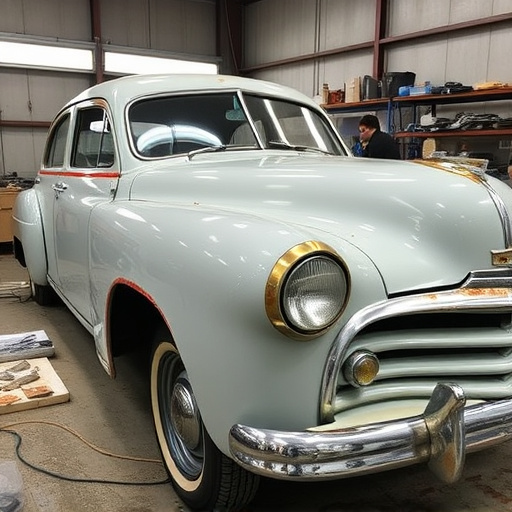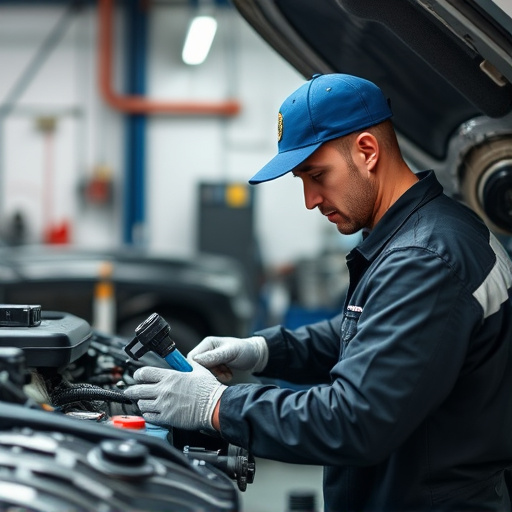Meticulous surface preparation, including debris and rust removal, sanding, cleaning, and priming, is vital for auto body repair. Water-based painting with low/no VOCs enhances environmental safety and finish quality, crucial for modern vehicle designs. Curing ensures paint adhesion and durability, followed by quality assurance checks and skilled techniques for a flawless, factory-like finish.
The auto body repair process has evolved with the advent of water-based paint systems, offering a more sustainable and effective alternative to traditional solvent-based paints. This article delves into the meticulous steps involved in repairing a vehicle’s exterior, focusing on the use of water-based paints. From preparing the auto body through sanding and cleaning, to applying the paint with expert techniques and reaping the environmental benefits, we explore each stage, ensuring superior quality and durability.
- Preparing the Auto Body: Sanding and Cleaning
- Applying Water-Based Paint: Techniques and Benefits
- Final Touches: Curing and Quality Assurance
Preparing the Auto Body: Sanding and Cleaning
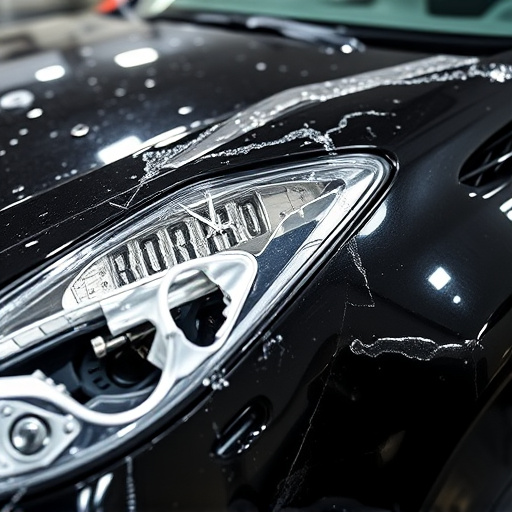
Before any auto body repair process begins, preparing the car’s surface is paramount. This involves meticulous sanding and cleaning to ensure a smooth base for the upcoming water-based paint system. Skilled technicians start by removing any loose debris, rust, or old paint using specialized tools and chemicals. Sanding is then employed to even out the metal, eliminating imperfections that could affect paint adhesion. This step is crucial in achieving a flawless finish, particularly in areas like fender repair or bumper repair where precision is key.
Once sanding is complete, a thorough cleaning process ensures all dust and contaminants are eliminated. This includes using degreasers and high-pressure washers to prepare the auto body for priming and painting. Proper surface preparation not only enhances the aesthetics of the final product but also guarantees the longevity of the paint job, making it an integral part of any car body shop’s auto body repair process.
Applying Water-Based Paint: Techniques and Benefits
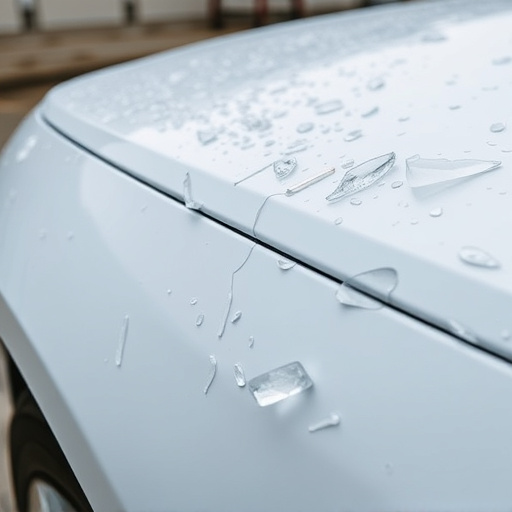
Applying water-based paint is a crucial step in the auto body repair process, offering both technical proficiency and environmental benefits. This technique involves using paints that contain little to no volatile organic compounds (VOCs), making them safer for both workers and the environment compared to traditional solvent-based paints. During application, advanced spray guns are employed to ensure even coating without drips or runs, enhancing the overall finish quality.
The advantages of water-based paint systems in collision repair centers and classic car restoration workshops are significant. They reduce the risk of harmful fumes, making work environments healthier for technicians. Moreover, these paints often provide superior adhesion to repaired surfaces, ensuring long-lasting durability. This method is particularly beneficial for intricate details and curves commonly found in modern vehicle designs, allowing for a seamless blend with original factory finishes.
Final Touches: Curing and Quality Assurance
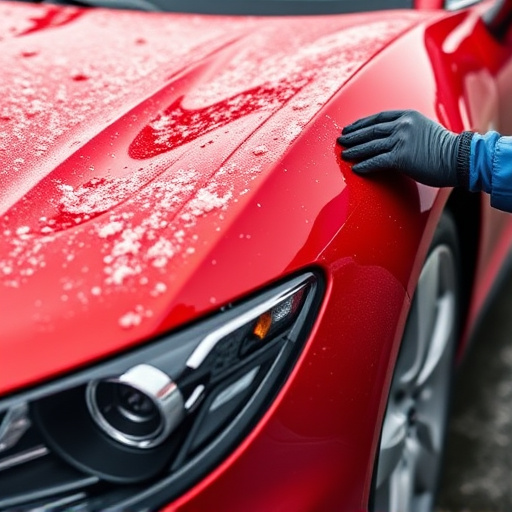
After the auto body has been meticulously prepared and painted with water-based systems, the final touches involve curing the paint to ensure optimal adhesion and durability. This process is crucial in achieving a seamless finish that matches the car’s original specifications. Curing allows the paint layers to properly set, providing protection against environmental factors like UV rays, harsh weather conditions, and potential future damage.
Quality assurance checks are performed during this phase to inspect the repair work for any defects or inconsistencies. This includes careful examination of paint clarity, color match, and surface smoothness. Skilled technicians use specialized tools and lighting techniques to detect even the subtlest variations, ensuring that the Mercedes-Benz collision repair meets the highest standards. The goal is to deliver a flawless finish, adhering to the strict requirements often seen in premium car bodywork, such as paintless dent repair techniques, to provide owners with a restored vehicle that looks and performs like new.
The modern auto body repair process, incorporating water-based paint systems, streamlines traditional methods with enhanced environmental friendliness and superior results. By meticulously preparing the auto body through sanding and cleaning, then expertly applying water-based paint with advanced techniques, the industry sets new standards in both sustainability and quality. Final touches of careful curing and rigorous quality assurance ensure indelible, vibrant finishes that not only revive vehicles but also contribute to a greener future.
